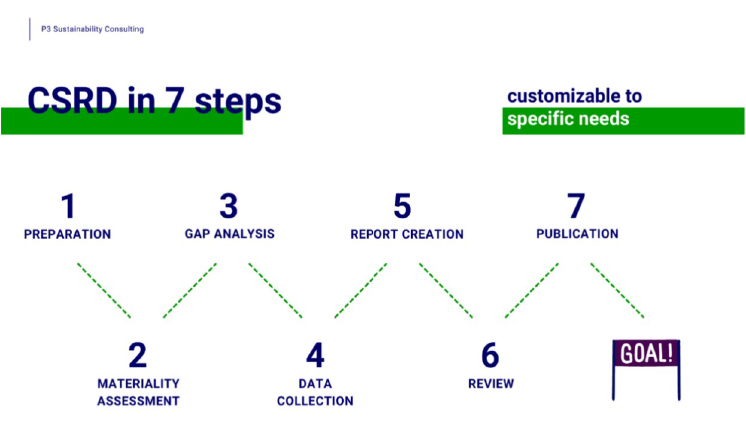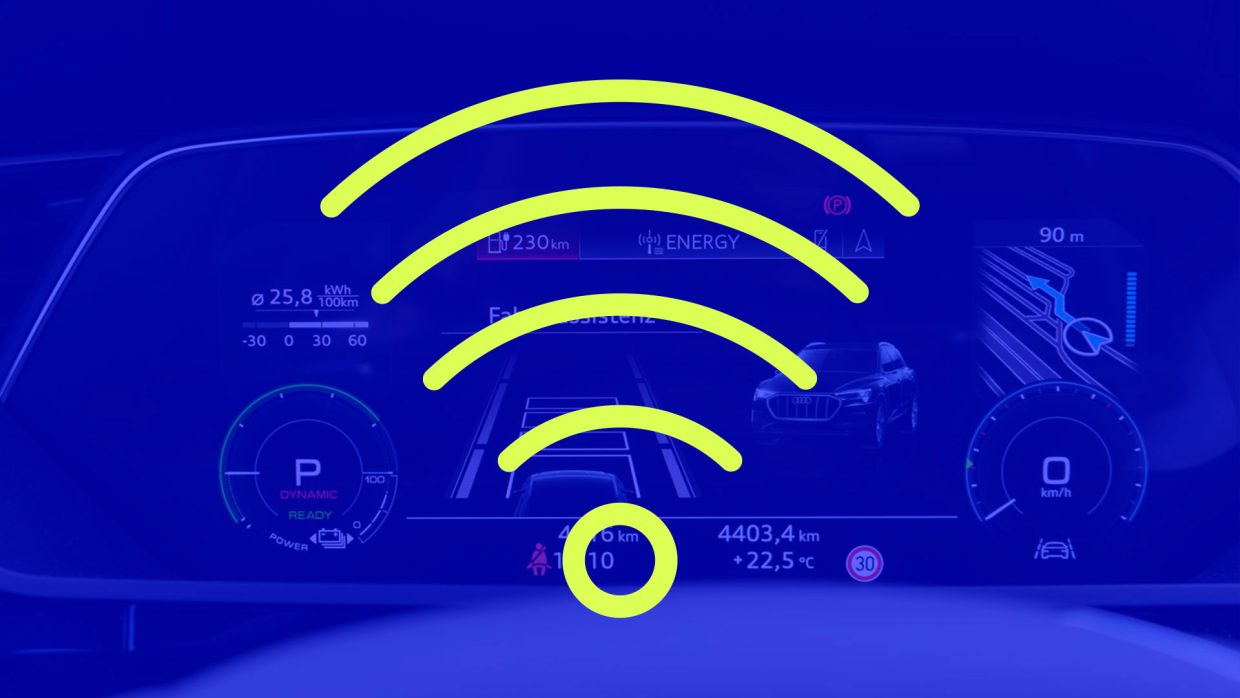In the current landscape of business discourse, one acronym is making waves: CSRD. But what is the exact meaning of CSRD?
The answer lies in its full form – Corporate Sustainability Reporting Directive. It aims to provide a larger scope and new depth regarding sustainability reporting of companies, replacing the previously established Non-Financial Reporting Directive (NFRD). Its primary goal? To enhance transparency, consistency, comparability, and the integration of sustainability into business strategy.
The advantages are quite clear, but we also understand the amount of uncertainty, overload, or frustration that can come along with this regulation. We have a step-by-step reporting process model to support you. It is designed to be flexible enough to adapt to the specific requirements of your business so that our services are precisely tailored to your needs. You can choose between the „all-around carefree package“, including all 7 steps, or just the specific steps you need to complement your own expertise.
LET US GET STARTED RIGHT AWAY:

1. PREPARATION
The implementation of CSRD introduces new reporting requirements, leading to unclarity.
With our P3 CSRD Checklist, nothing gets overlooked during the preparation phase. We work with you, for example, to capture the status quo, define the scope, the timeline and project team, and select the tools to support the downstream processes.
2. MATERIALITY ASSESSMENT
When conducting a Materiality Assessment (MA), there are two important things to consider.
Firstly, current Materiality Assessment will most likely not be based on the new European Sustainability Reporting Standard (ESRS) and adaptation will be needed. As this is still a new standard, there are no established best practices or comparable approaches to be relied on exactly, let alone sector-specific standards. Through our tool-based methods, recently enhanced by the new double materiality workflow feature provided by our partner Envoria, we ensure compliance with ESRS. This approach minimizes the risk of inaccurate reporting and potential gaps while meeting documentation requirements.
Secondly, it is now necessary to consider the double materiality with an IRO (Impact, Risks, Opportunities) assessment. This means that the company needs to view its impact on sustainability topics (Inside-Out/Impact Materiality) and also the financial impacts of the sustainability topics in regard to its own company (Outside-In/Financial Materiality).
A topic should be considered if it is material from one or both perspectives. For the NFRD, a topic was only material if both perspectives were met. To assess both material and non-material aspects of sustainability, we provide various assistance here, from helping to estimate the scope of the assessment to identifying relevant topics through analysis of different stakeholders, the supply chain, and other key entities. Depending on the sustainability topic, our assessment extends to sub and, if necessary, sub-sub-topic levels.
3. GAP ANALYSIS
Als Change-Team der P3 begleiten wir unsere Kunden durch Veränderungen. Wir sehen das große Ganze und schaffen einen Rahmen, in dem Mitarbeitende Veränderungen als Chance und nicht als unüberwindbare Bedrohung begreifen. Mit viel Herzblut, einem Blick fürs Detail und individuellen harmonisch abgestimmten Maßnahmen gestalten wir Transformationen. Veränderung braucht Zeit, Mut und passgenaues Vorgehen.
4. DATA COLLECTION
If your data is distributed to various sources and interfaces, traceability of the topicality is compromised.
With the centerpiece of Envoria, we offer a sleek solution for seamlessly feeding data from the materiality assessment into Envoria’s ESG Reporting module covering the ESRS standards and CSRD requirements. This not only optimizes data management but also harmonizes varying data sources and interfaces. Plus, it ensures timely traceability and gives a holistic overview of responsibilities, accountabilities, and key milestones.
5. REPORT CREATION
After collecting and analyzing the data, it is time to create a comprehensive report. That is where our in-house communication professionals come in. Besides transferring the content into an ESRS-compliant structure, our colleagues from KOMMLOFT® can support you with clear messaging and creative visuals to differentiate you from competitors.
6. REVIEW
The examination is carried out by auditors. However, we will accompany you along the way. We work with RSM Ebner Stolz, who provide compliance sparring and they safeguard the process with recurring quality reviews. Together, we prepare you, by establishing continuous feedback loops and by validating the actuality and completeness of your report. The creation of content statements to prepare you for limited assurance is also part of our service.
7. PUBLICATION
The report is ready and approved – the final step is the publication. Together, we develop and implement the final design. The content needs to reach heterogeneous target groups and be understandable for society, the financial market, and your employees, which is why we also offer to have the accompanying communication concept created by our KOMMLOFT®.
To truly drive change and promote a sustainable world, we need to join forces. It’s a journey of collective effort and shared commitment to make a difference. We would like to thank our partners for their cooperation and are thrilled to be able to bring together our expertise with that of Envoria (by Fisa) and RSM Ebner Stolz. Read this interesting article to learn more about cooperation in sustainability.
For many companies, CSRD is just around the corner. Begin implementing the ESRS now to make sure you are fully ready on time. Let’s chat – we are here to help.




